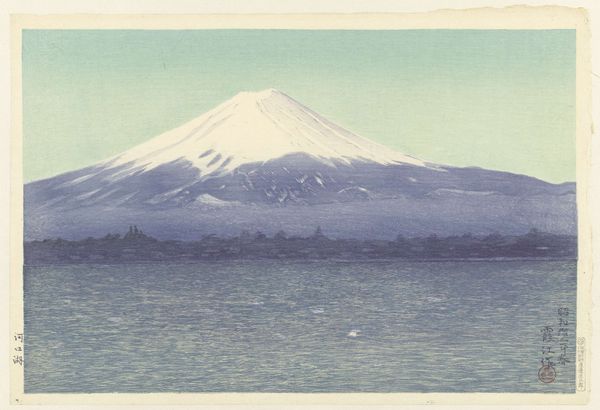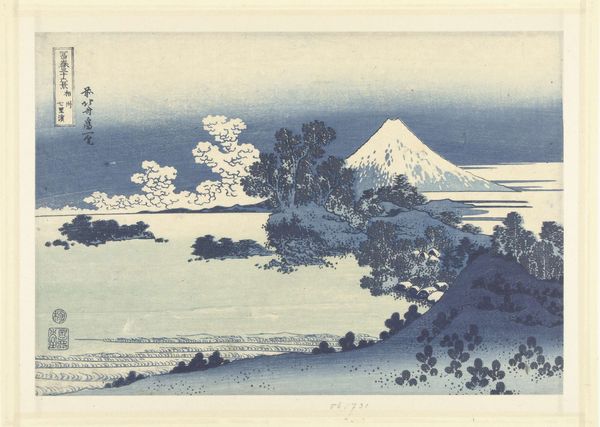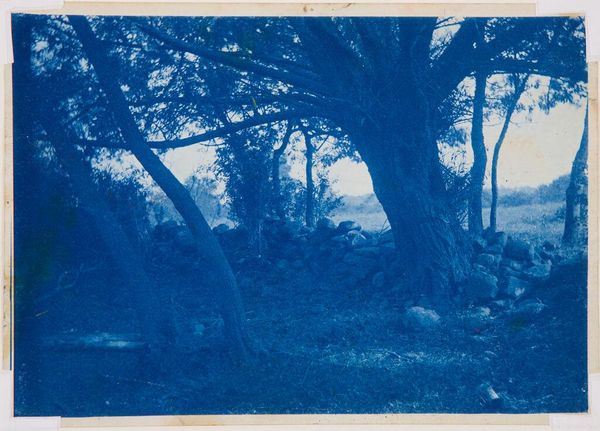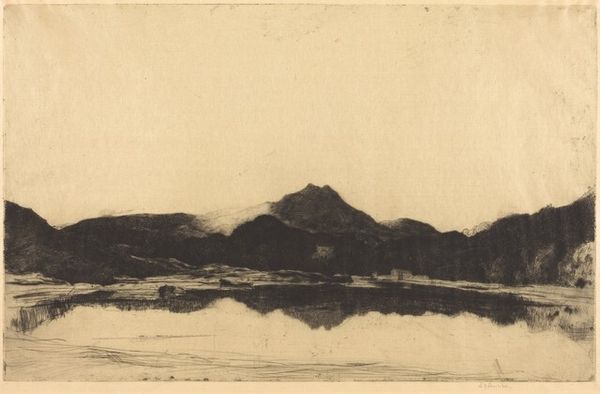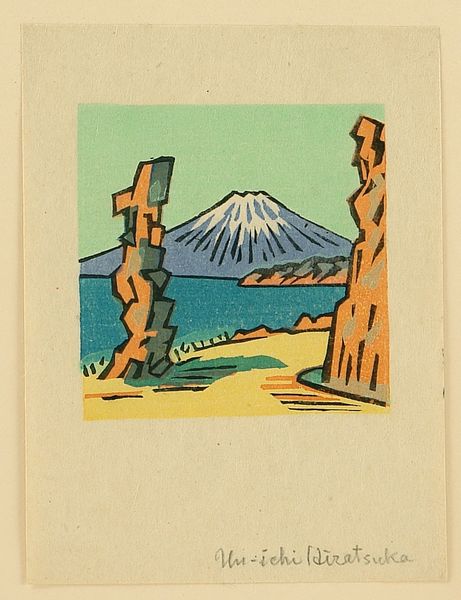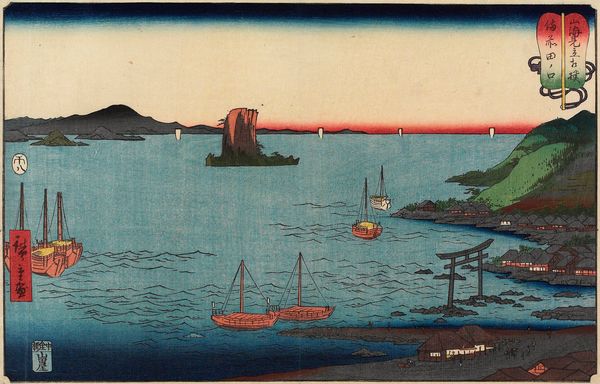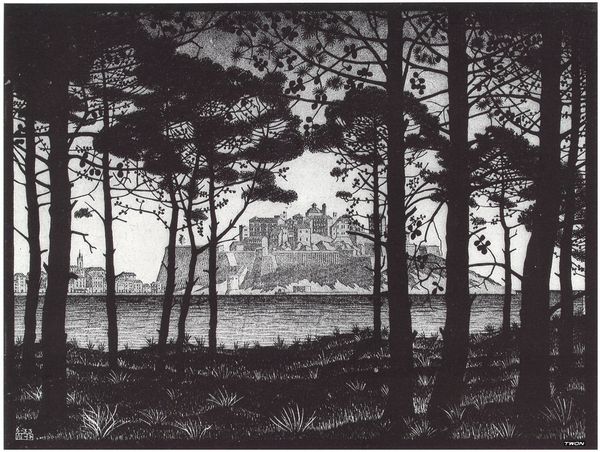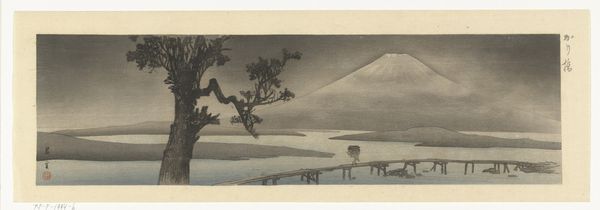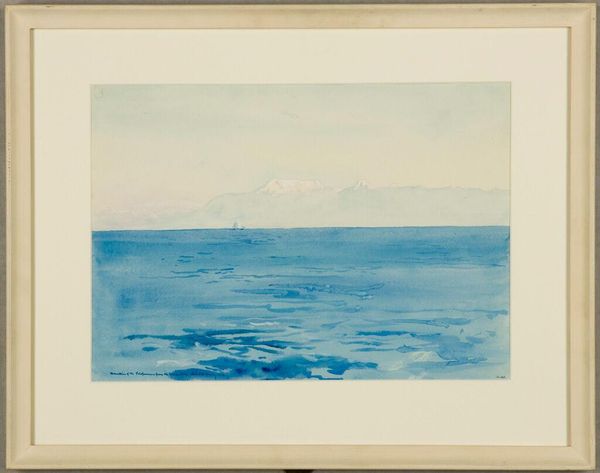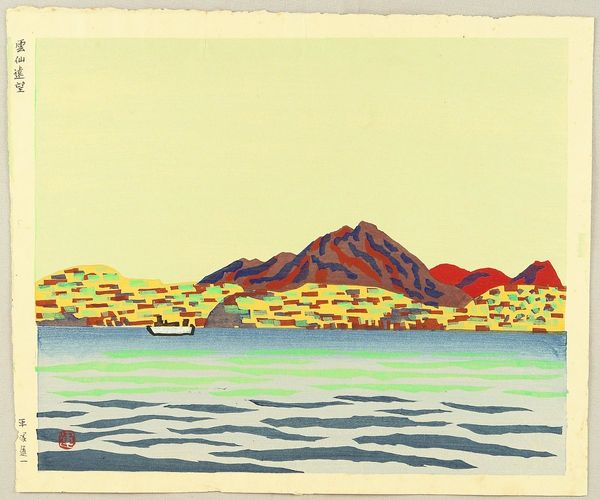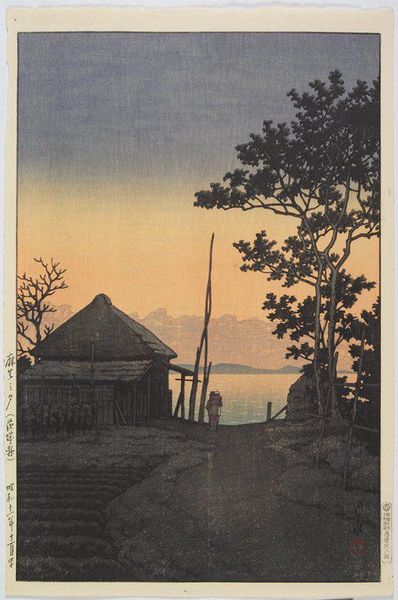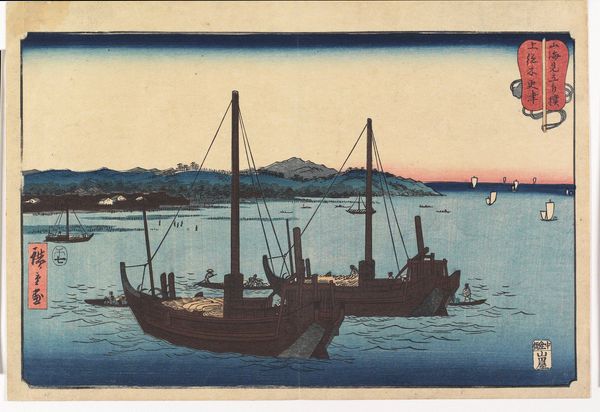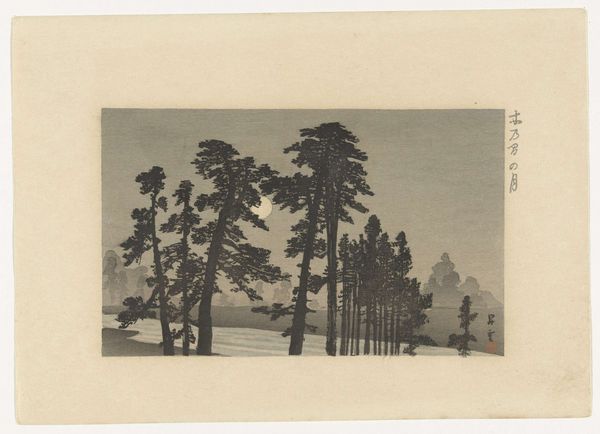
Dimensions: height 289 mm, width 435 mm
Copyright: Rijks Museum: Open Domain
Editor: This is Watanabe Kako’s 1936 watercolor, "Avondgloed in het Nishi park in Fukuoka." It’s incredibly serene; the dark trees frame this vast, calm body of water. What social or political tensions might be subtly present in this scene? Curator: Given the rise of militarism and nationalism in Japan during the 1930s, even a landscape like this can be read as a reflection of those tensions. Do you see how the dark, almost oppressive trees seem to guard or obscure the peaceful scene beyond? Editor: I see that now! The silhouette of those trees *does* feel a bit imposing, almost like a barrier. It's such a contrast to the tranquil sunset and water. Curator: Precisely. Consider also how representations of nature were often used to reinforce ideas of national identity and cultural purity during this period. Was this a reinforcement, or something else? Does the artist celebrate tradition, or question it through composition? Editor: I hadn’t thought of it that way. The trees feel like gatekeepers of a traditional vision, perhaps. Was the artist resisting or engaging with the dominant ideology? Curator: It's precisely this ambiguity that makes the work compelling. This subtle resistance is part of its power, wouldn't you say? Even quiet, nature-focused art couldn't escape the political currents of its time. Editor: Absolutely. Thinking about art in this context helps to unveil how it impacts broader dialogues around identity and politics. Thank you! Curator: It is imperative for us to think through art. My pleasure!
Comments
No comments
Be the first to comment and join the conversation on the ultimate creative platform.
